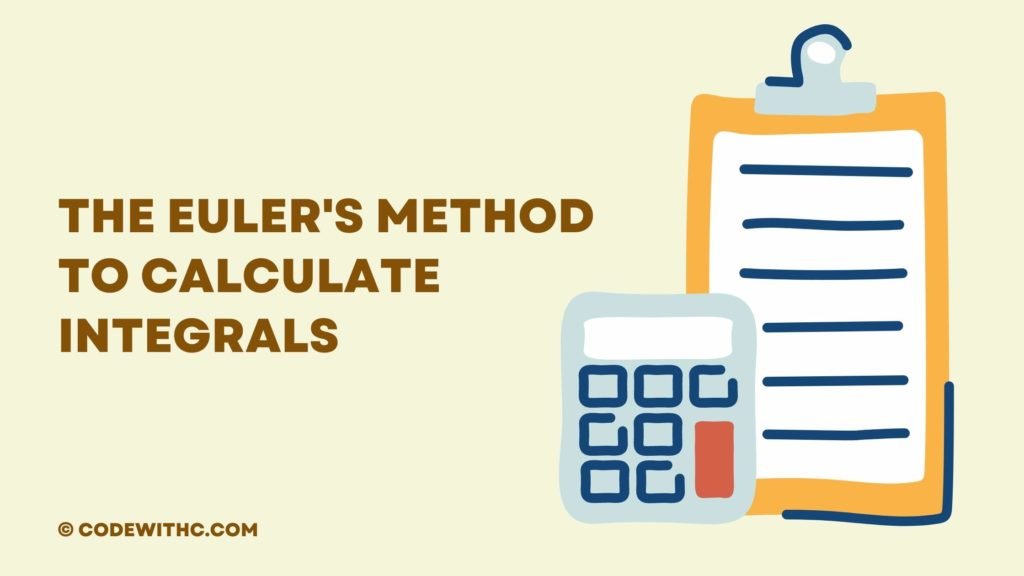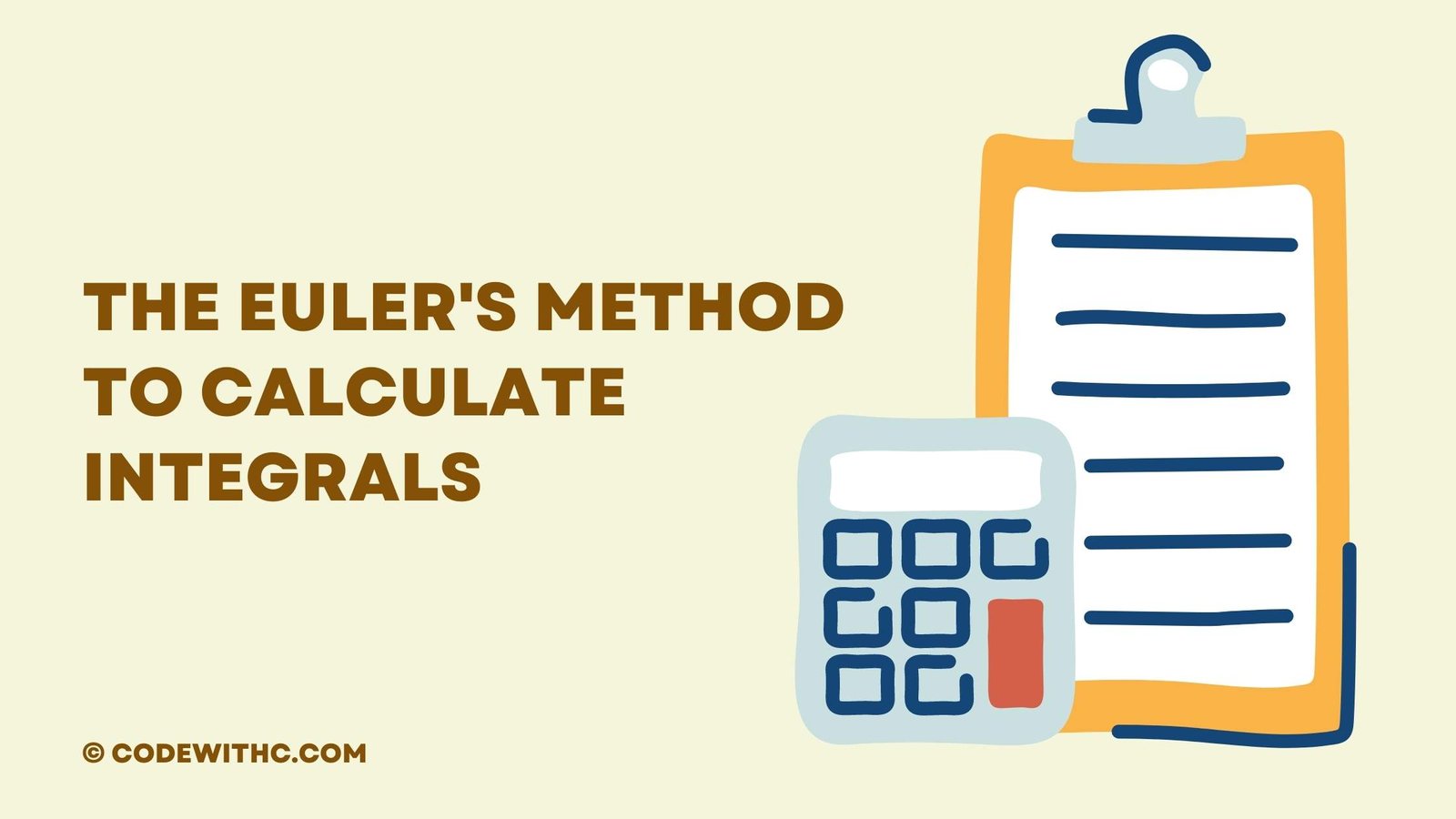Many of you might have heard about the Euler’s method but not many of you know how to use it in a mathematical sense. The Euler’s method is used to calculate the definite integral of a function. In this tutorial, we will see how to use this method to calculate definite integrals.
The Euler’s method is mainly used to calculate the following type of integrals:
- The definite integral of a polynomial function
- The definite integral of an exponential function
- The definite integral of a trigonometric function
- The definite integral of a rational function
The Euler’s method is used to calculate the integral by dividing the given interval into n subintervals and then integrating each subinterval separately.

Indefinite integral of a polynomial function work
We all know that there is a polynomial function as it can be written as a formula like this: I’m sure you would have guessed that this is the formula of a polynomial function.
Let’s define a polynomial function as a function of one variable, z, that is a function of the variable z whose value is given by a polynomial equation, that is, it has a constant term, a linear term, and a quadratic term.
Example:
Let’s consider the definite integral of the polynomial f(x)= x² + x + C.
Step 1: Let’s divide the interval into n equal subintervals.
Step 2: Integrate each subinterval.
Step 3: Sum up the values of each subinterval.
Here, x = 0, x = 1, x = 2, x = 3, …, x = n and the value of n is decided by you.
The sum of the integral of the first, second, third, fourth, fifth, and sixth subintervals will be equal to:
[0,1] x^2 + [0,1] x + [0,1] C.
Indefinite integral of a exponential function
The definite integral of an exponential function is a kind of integration that is commonly used in science, mathematics, and engineering. It is the sum of the area under a curve. It is a kind of area, which is added to the height.
Euler’s Method exponential function is an equation that shows how the output of a process changes over time. This function can be expressed as a power of a constant, multiplied by the exponent. In mathematics, the definite integral of an exponential function is the sum of the areas under the graph, starting from the starting point.
- Let us have a look at the example of a function y=2xe.
- The function has a range of 2. The starting value is x=0 and the final value is x=3.
- The area under the curve from 0 to 3 is 2 + 4 + 6 + 8 = 18. The total area is therefore 18.
- We can also use the definite integral of an exponential function as the formula for the area of a triangle.
- For the above example, the area of the triangle is equal to 3/2 times the height, which is 3.
- We can also use the definite integral of an exponential function as the formula for the volume of a solid.
For the above example, the area of the solid is equal to 3/4 times the height, which is 1.
The definite integral of an exponential function is the sum of the areas of all the rectangles that make up the shape.
In case of an exponential function, the area is calculated as the base of the rectangle, times the height, times the number of rectangles.
The above graph shows that the definite integral of an exponential function is the same as the integral of the derivative of the exponential function.
The definite integral of an exponential function can be expressed as the formula, for example, y=e^(x^2) is the exponential function.
- Its derivative is dy/dx = e^(x^2) 2x.
- Its second derivative is dy/dx^2 = e^(x^2) 2x^2.
- Its third derivative is dy/dx^3 = e^(x^2) 6x^2.
Therefore, the definite integral of an exponential function is equal to:
Integral of dy/dx = e^(x^2) 2x.
The above function is defined as the definite integral of an exponential function.
The definite integral of an exponential function is a kind of integration that is commonly used in science, mathematics, and engineering. It is the sum of the area under a curve. It is a kind of area, which is added to the height.
Example:
Let’s consider the definite integral of the exponential function g(x)= e^(x + C).
Step 1: Let’s divide the interval into n equal subintervals.
Step 2: Integrate each subinterval.
Step 3: Sum up the values of each subinterval.
Here, x = 0, x = 1, x = 2, x = 3, …, x = n and the value of n is decided by you.
The sum of the integral of the first, second, third, fourth, fifth, and sixth subintervals will be equal to:
[0,1] x e^(x + C).
4 Easy Steps to Calculate the Definite Integral of an Exponential Function
One of the most interesting concepts in Mathematics is the definite integral. It is very important for any student who wants to learn Mathematics with Euler’s Method.
To calculate the definite integral, you need to perform some basic steps which are given below.
Step 1: The first step of calculating the definite integral is to draw the graph of the function. In order to draw the graph, you need to use the formula of the exponential function.
f(x)=a^x
where a is the base of the exponent and x is the variable.
Step 2: Once you have drawn the graph of the function, you can easily find the range of the function by drawing the y-axis.
Step 3: After finding the range of the function, you need to take the integral of the function. For the definite integral, you need to multiply the area of the function with the value of the function.
Step 4: Once you have calculated the definite integral, you will get the answer.
Indefinite integral of a trigonometric function
As per the definition, the definite integral of a trigonometric function is the area under the graph of the function. The area is calculated by adding up the area of all the sub-intervals that contain the graph of the function Euler’s Method.
Here, we will discuss about the definite integral of a trigonometric function as a real number.
Formula: The formula to calculate the definite integral of a trigonometric function is given below:
Where,
f(x) = the value of the function at any point
n = the number of intervals that contain the graph of the function
dx = the length of the interval
The formula will be discussed further in the coming parts of this blog.
Calculate the definite integral of a trigonometric function
To calculate the definite integral of a function f(x), we need to define the function first. The function f(x) will be defined as a function from a real number x to a real number y.
This function is represented as a graph of the function. Now, we have to find out the number of sub-intervals that will cover the graph of the function.
Here, we will calculate the definite integral of a function f(x)= sin(x)+cos(x).
Formula:
Now, we will calculate the definite integral of a function f(x)= sin(x)+cos(x).
Using the formula, the definite integral of this function is given as follows:
Let us assume that the function f(x)= sin(x)+cos(x) is given and it has to be integrated from x=0 to x=1.
Here, the area of the graph of the function will be equal to the sum of the areas of the sub-intervals of the graph of the function.
As you can see, the graph of the function has 2 sub-intervals, so, the area of each sub-interval will be 1/2.
Example:
3) Let’s consider the definite integral of the trigonometric function h(x)= sin(x + C).
Step 1: Let’s divide the interval into n equal subintervals.
Step 2: Integrate each subinterval.
Step 3: Sum up the values of each subinterval.
Here, x = 0, x = 1, x = 2, x = 3, …, x = n and the value of n is decided by you.
The sum of the integral of the first, second, third, fourth, fifth, and sixth subintervals will be equal to:
[0,1] cos(x + C).
The Definitive Integral of a Rational Function
There are many times when we need to calculate the integral of a rational function. When we are solving some problems related to calculus, then this is the first step that we need to perform with Euler’s Method.
Suppose, you have a rational function r(x), then it is a function that is defined by the ratio of two polynomials. So, if we denote the degree of the numerator and denominator of the rational function as d1 and d2 respectively, then r(x) can be written as:
r(x)=a(x)/b(x)
where,
d=d1+d2
So, for example, if the degree of the numerator and denominator are both 2, then the rational function will be of the form:
r(x)=ax^2+bx+c
Now, suppose that you need to find the integral of r(x), then the integral of this type of function can be written as:
∫r(x)dx=∫a(x)dx∫b(x)dx
So, we can see that this is the indefinite integral of the rational function.
We can also use the definition of the definite integral:
∫f(x)dx=f(x)(x)-F(x)+C
Using the above formula, we can write the definite integral as:
∫r(x)dx=a(x)(x)-F(x)+C
where, F(x) is the antiderivative of a(x) and C is the constant term.
I have also shared with you the method to find the indefinite integral of a rational function. So, try to memorize this formula for the future.
In order to find the area under a curve, you have to set up a table where you fill in the values for x and y. The area under the curve is given by the formula: Where you start at the origin (0, 0) and you end at the point (x, y). So, we would have: To find the area under a curve, you can use the Euler’s method. This is a numerical integration method that is used to calculate the area under a function.
If you’re having trouble visualizing a function, you can draw it out on a graph. Once you’ve found the x value that you’re going to take, use the formula above. Now you just have to take the derivative and solve for the integral. It sounds complicated, but the only calculus you have to do is a simple derivative.
In conclusion, the Euler’s Method To Calculate Integrals is a very effective technique that is widely used today. If you need to calculate an integral that is beyond your current level of mathematical understanding, try the Euler’s Method. It is a powerful technique that can be used with elementary and intermediate students. To use this method you will need to know some basic rules of algebra and a simple formula for finding a derivative. There is nothing more to it than that.







